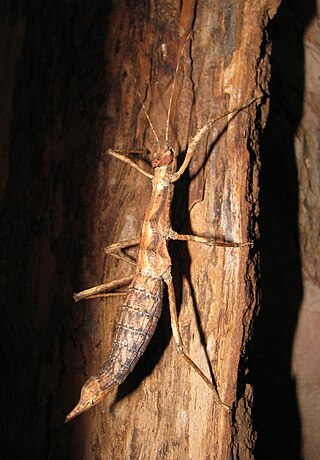
Sungaya inexpectata is a species of stick insects and the type species of genus Sungaya. The species name is derived from the Latin as "inexpectatus" and means "unexpected". Its common name is sunny stick insect, derived from the less commonly used sungay stick insect, which in turn refers to the place where the species was found.

The Obrimini are the most species-rich tribe of the Phasmatodea family of the Heteropterygidae native to Southeast Asia.
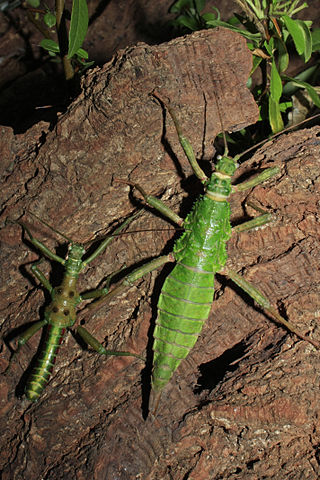
Mearnsiana is a genus of stick insects, which is native to the Philippine islands Mindanao, Leyte and Dinagat.

Mearnsiana bullosa, occasionally referred to by the common name Manobos stick-insect,is a species of stick insect in the family Heteropterygidae. It is native to the Philippine islands of Mindanao and Leyte. Until 2023 it was the only described representative of the genus Mearnsiana.
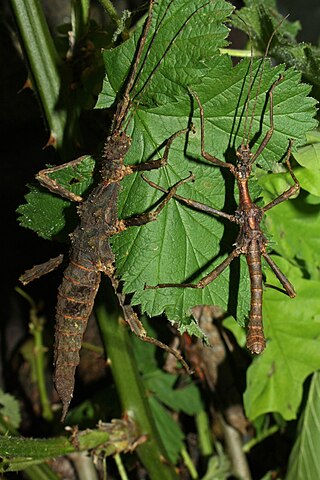
Trachyaretaon is a genus of stick insects native to the Philippines.

Brasidas is a genus of stick insects that is native to the Philippines and is named after the Spartan general Brasidas

Eubulides is a stick insect genus native to the Philippines.

Theramenes is a genus of medium-sized stick insects in the tribe Obrimini, which is native to the Philippines and to the Indonesian Talaud Islands.

Trachyaretaon carmelae is a species of stick insects. It is one of the largest in the subfamily Obriminae.
Trachyaretaon gatla is a species of Phasmatodea native to the Philippine island Palawan.
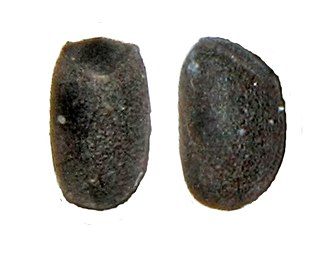
Stenobrimus is a genus of medium-sized stick insects native to the Philippines.

Haaniella gintingi is a stick insect species from Sumatra. It is a typical representative of the subfamily Heteropteryginae. The occasionally used common name Ginting's Haaniella refers to the species name.
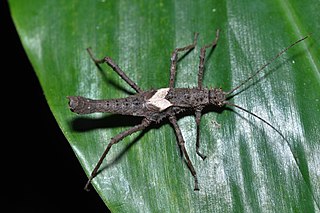
Haaniella parva is a species of stick insect from the subfamily Heteropteryginae and belongs to the representatives of the genus Haaniella native to Sumatra. It is their smallest representative.

Brasidas cavernosus is a representative of the stick insects native to the Philippine island Luzon. It is considered one of the largest species in the subfamily Obriminae.

Trachyaretaon negrosanon is a stick insect species from the family Heteropterygidae native to Negros.
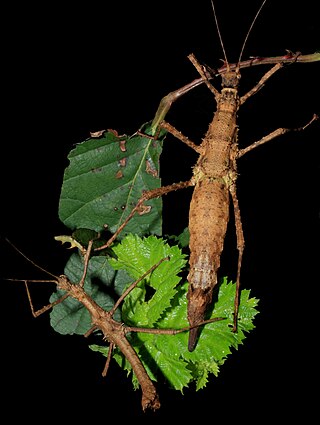
Brasidas lacerta is a species of stick insect in the family Heteropterygidae which is endemic to Mindanao. Due to its extreme variability, and the nymphs being spinier than to the adults, the species has been described under other names, resulting in a total of seven synonyms.

Trachyaretaon bresseeli is a species of stick insects in the family Heteropterygidae. It is native to the Philippine island Luzon.

Sungaya aeta is a species of the family of the Heteropterygidae. Although only described in 2023, it has been one of the most common stick insect species kept in the terrariums of enthusiasts.

Sungaya ibaloi is a species of insect from the family Heteropterygidae. It is one of three very similar stick insect species of the genus Sungaya, which are often kept in the terrariums of enthusiasts. Like all representatives of the genus, the species is endemic to the Philippine island Luzón and was found there in the province of Benguet.

Eubulides timog is a stick insect species from the family of the Heteropterygidae. Although only described in 2023, this species, native to the south and east of the Philippine island Luzón, has been kept and bred in the terrariums of enthusiasts since 2009.















